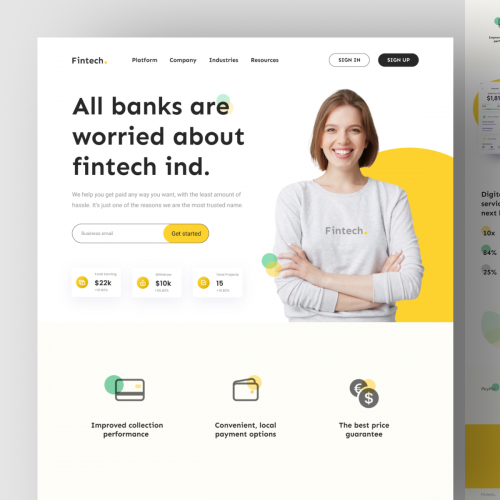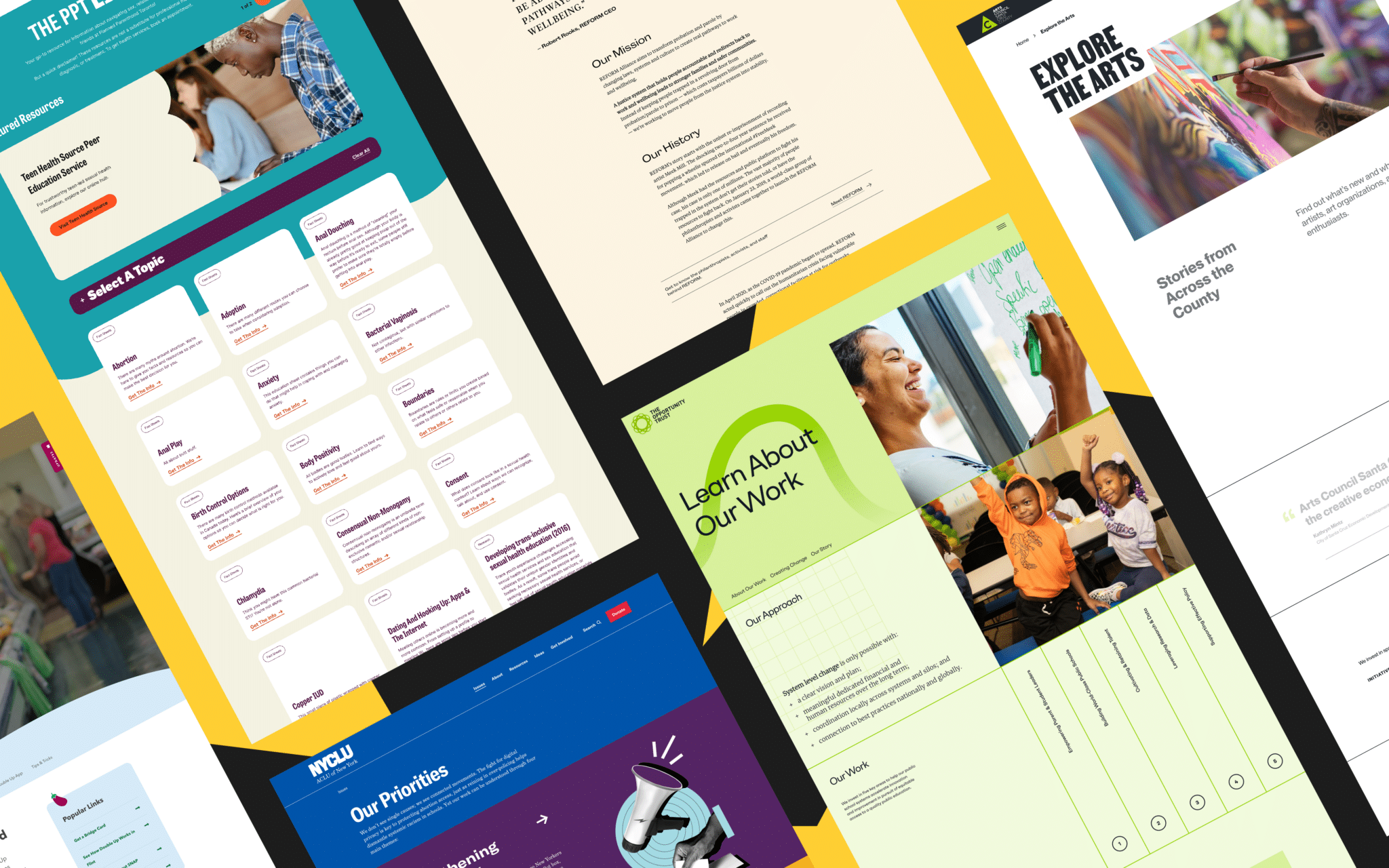Why Website Design Matters for Building a Strong Online Brand
Why Website Design Matters for Building a Strong Online Brand
Blog Article
Modern Web Site Design That Catches Interest and Transforms
In an increasingly electronic landscape, contemporary website design has actually arised as a pivotal factor in recording individual interest and driving conversions. As we explore these important elements, it becomes clear that comprehending their interplay can dramatically affect a site's performance and individual complete satisfaction.
Value of Visual Hierarchy
Aesthetic hierarchy is a critical component in site style, as it guides users' focus and boosts their total experience. By tactically organizing web content, designers can direct customers to the most crucial information first, consequently increasing engagement and enhancing functionality.
Incorporating a sensible flow in web content arrangement is essential; for example, positioning the most critical info on top of a web page cultivates prompt acknowledgment. Consistent usage of typography, such as varying font dimensions and styles, aids establish a clear material framework. This company not just aids in navigating yet additionally develops depend on, as users feel extra comfy when they can easily locate what they are trying to find.
Ultimately, a well-executed visual pecking order not only enhances visual charm but additionally significantly influences user habits. By focusing on important elements and guaranteeing a smooth experience, developers can successfully transform site visitors right into customers, strengthening the relevance of this fundamental design principle in modern site development.
Responsive Layout for All Devices
Creating a seamless experience across various gadgets is necessary in today's electronic landscape, where customers gain access to websites from desktops, smartphones, and tablets alike. Responsive layout is a critical strategy that makes sure web sites adjust fluidly to various display positionings, resolutions, and sizes. By using versatile grids, images, and CSS media queries, developers can develop formats that preserve visual stability and performance, no matter the tool being made use of.
The relevance of receptive layout extends beyond visual appeals; it directly influences user interaction and conversion rates. A web site that operates well on all devices urges longer brows through and lowers bounce prices, as customers are more probable to connect with material that is easy to navigate. Moreover, online search engine, particularly Google, focus on mobile-friendly websites in their rankings, making responsive design a vital part of seo (SEARCH ENGINE OPTIMIZATION)
Incorporating responsive design not just boosts customer experience but additionally enhances the growth procedure. By producing a solitary site that works throughout tools, companies can conserve time and resources compared to developing separate mobile and desktop computer versions. Eventually, receptive design is an essential method for modern-day web site layout, guaranteeing ease of access and contentment for all customers, despite their device.
Engaging Interactive Components
While a receptive style lays the foundation for a practical site, integrating engaging interactive components is vital for capturing user interest and promoting much deeper links. Website Design. Interactive components, such as animations, tests, and clickable infographics, produce a more dynamic user experience, encouraging visitors to spend more time on the website
Incorporating interactive functions can also direct users with complex info, making it simpler to absorb content. Interactive sliders can illustrate product variations, while ingrained video clips can supply demos or testimonies that resonate even more than fixed pictures or text. Gamification techniques, like rewards for completing tasks or engaging with web content, can enhance individual motivation and retention.
Efficient use interactive aspects not just enhances the customer experience yet look at here now can likewise lead to greater conversion rates. By making communications pleasurable and useful, companies can cultivate a sense of commitment and trust with their target market. However, it is necessary to balance interactivity with efficiency; overly complex functions may impede website speed, negatively affecting individual satisfaction. Eventually, incorporating well-designed interactive components can significantly raise a site's efficacy, driving engagement and conversions in today's affordable electronic landscape.
Structured Navigation Practices
Reliable navigating is a cornerstone of any type of effective website, as it straight influences individual experience and web content access. Streamlined navigation practices guarantee that customers can conveniently situate information, improving their communication with the website. A well-structured navigation food selection need to be simple and instinctive, generally featuring a restricted number of primary categories to stay clear of overwhelming visitors.
To attain structured navigation, designers ought to focus on a hierarchical structure that practically organizes material. Carrying out breadcrumb trails can provide users with context concerning you can look here their present area within the site, enabling seamless backtracking. Additionally, making use of drop-down menus can efficiently save room while still supplying accessibility to subcategories.
Responsive layout is critical, as navigation must be practical across all devices (Website Design). Mobile users, in particular, benefit from touch-friendly menus and collapsible sections that keep usability without endangering visual appeals

Effective Call-to-Action Approaches
A well-crafted call-to-action (CTA) is crucial for guiding customers toward desired outcomes on a web site, as it encourages them to involve with material or purchase. To maximize their performance, CTAs ought to be clear, compelling, and strategically positioned throughout the site.
First, utilize action-oriented language that connects seriousness or worth, such as "Begin," "Sign up with Currently," or "Case Your Price cut." This language not just inspires users but likewise establishes clear assumptions regarding the following steps.
2nd, consider style components; CTAs ought to stand apart visually with contrasting colors, sufficient whitespace, and popular positioning. A switch that is very easy to see and click increases the likelihood of user interaction.
Furthermore, individualizing CTAs based upon user actions or demographics can significantly improve engagement. Tailored messages resonate much more with individuals, driving greater conversion rates.

Final Thought
To conclude, contemporary internet site style stresses the integration of aesthetic power structure, responsive designs, engaging interactive components, structured navigating, and effective call-to-action techniques. These components collectively enhance customer experience, making certain that site visitors remain engaged and inspired to explore web content even more. By prioritizing these style principles, companies can considerably boost individual retention and conversion prices, ultimately leading to greater success in the digital landscape. The continual evolution of website design underscores its critical function in effective on-line communication and marketing.
In a significantly electronic landscape, modern site layout has actually emerged as a critical aspect in recording customer focus and driving conversions.Aesthetic power structure is an essential aspect in website layout, as it overviews customers' interest and boosts their general experience.The importance of receptive design prolongs beyond aesthetic appeals; it directly impacts customer engagement and conversion prices.Incorporating receptive style not only improves individual experience however likewise improves the advancement procedure. Ultimately, receptive style is an essential technique for modern web site style, guaranteeing accessibility and contentment for all users, regardless of their tool.
Report this page